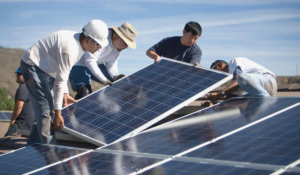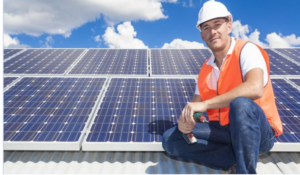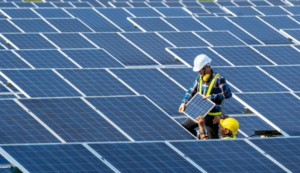
Exploring Alternative Energy: Solar Power System Installation
In this day and age, the quest for cleaner, renewable, and more environmentally friendly sources of electricity is on the rise. Governments all over the world have taken special interest in the subject and as such providing the enabling environment for the phasing out of the use of traditional fossil fuels in the generation of electricity.
One of the most popular alternatives that are being employed is solar energy. As we all know this is energy gotten from the sun and thankfully the sun is a free and abundant resource albeit more so in some regions than others.
Simply put, solar power systems comprise solar panels which are also known as modules, a system for mounting the modules, and an inverter that has a computerized controller. These components all have their roles in the production of energy.
In this article, we will briefly share some basics about the installation of this system and tips for choosing the best company for the job so stay with us.
The Installation Process of Solar Panels
As we mentioned earlier, every element in the SPS (Solar Power System) has its specific functions and they are as follows:
- Modules produce direct current electricity from the sun.
- The inverter converts the direct current (DC) electricity to Alternating current (AC) that is suitable for use in households.
- The computerized controller is used to manage the SPS for optimal performance.
- Solar battery is an optional component that is necessary for those who want off-grid SPS or battery backup. You can visit this site: https://www.energy.gov for more details on off-grid systems.

The most popular part of a building where PV panels are installed is the roof. A good number of homes have the desired roof specification for it and enable the panels to get the required quantity of sunlight. However, there are exceptions where the roof is not compatible with this installation. In this case, the panels are mounted on the ground, but the installer must make sure that there is no blockage of sunlight.
The following is a summary of the installation process:
- Put up scaffolding.
- Install the mounts for the modules.
- Install the panels.
- Install the electric wires to the panels.
- Install the inverters(s).
- Connect the inverter to the battery (this is an optional step). Click here for reasons why you shouldn’t skip this step.
- Connect the inverter to the consumer unit.
- Test the panels to be sure everything is professionally installed.

Tips for Choosing the Best Company for Your Solar Panel Installation
Although we have briefly explained the steps for the installation of these systems, we can confidently say that this is not a process to be carried out by just anybody; it is best left to experts. That being said, you must therefore look out for the right company to do the job.
Find below some tips to help you choose the best hand for the job:
- Consider their reputation- It is important to look out for the reputation of the company you want to work with. Ensure that they are legitimate and upstanding. Also, look out for their track record. This you can do by reading reviews online and also asking around about them.
- Ensure that they have the right certifications and licenses and that they comply with government standards in their operations.
- Find out the quality of materials they use.
- Ascertain the qualifications and skills of their operational staff.
- Find out whether they have great after-sales support and the type of warranty they have.
- Ensure that the company is financially stable and will be around for a long time to come.
- Compare prices and look out for financing options.
Conclusion
Going green with solar energy not only has many advantages for the user but is also beneficial to the environment. You can check out https://www.eia.gov for more details. In this article, we have briefly shared some basic information about the components of the system and the installation process. We have also shared tips that will help you choose the best company for the job. We believe that the information shared here will go a long way to help you in your decision-making about solar panel power systems.
